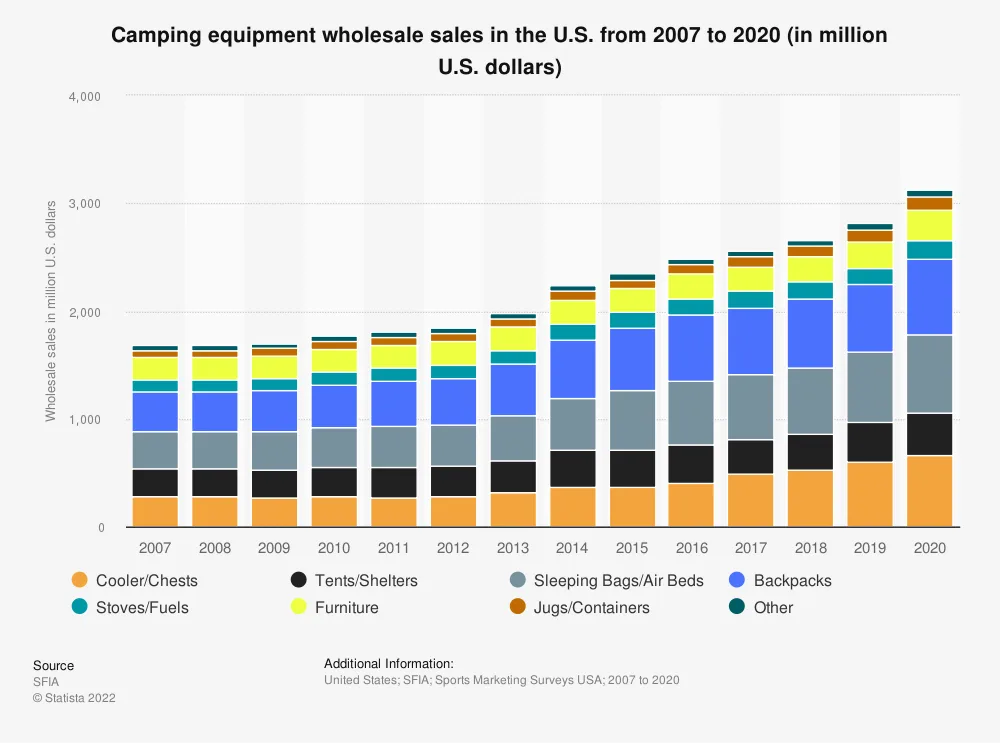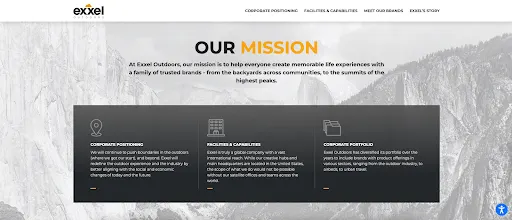Many people who participate in sports or outdoor activities — particularly those that some might call extreme — do more than simply dabble. For them, it becomes an integral part of their lifestyle, shaping the way they spend their free time, who they share it with and how they view the world.
This is both a tremendous challenge and an opportunity for growing lifestyle brands.
On the one hand, you have the chance to build lasting relationships with consumers who will evangelize your brand to their fellow enthusiasts — if you can strike the right ratio and speed when it comes to novelty, product and honest, value-driven storytelling.
On the other hand, these consumers have very particular needs — and high expectations — that can be difficult to meet. You’re not just selling a snowboard, a surfboard, a pair of running shoes or a water bottle off of Amazon. You’re selling the unique way that you can help them bring their aspirations to reality and achieve their wildest goals.
Ecommerce Outdoor Site Popularity
Over the last several years, as many indoor locations have closed due to pandemic restrictions, many people have begun searching for recreational activities outside of the home.
In fact, according to a recent poll, around two-thirds of Americans have begun to do more activities outdoors since the implementation of quarantines and lockdowns in 2020.
This has produced a significant opportunity for outdoor sports retailers, who have already begun to take advantage, with revenue numbers for athletic and outdoor gear having climbed broadly since 2020.
For ecommerce providers in the outdoor industry, the increased demand for outdoor gear has coincided alongside a broader shift to the online marketplace.
As people continue to flock to the outdoors, online sales will only continue to grow in popularity.
Types of Outdoor Ecommerce Products
While we can see that outdoor ecommerce strategies and marketing efforts have begun to grow in popularity, it is not always clear what exactly that entails.
The following are products and services that can define and transform your ecommerce business:
Apparel.
The outdoor apparel market value worldwide is forecast to reach a value of nearly $20 billion by 2026.

As with many other industries, apparel is perhaps the most significant market within outdoor ecommerce. For ecommerce platforms looking to gain a foothold, apparel can represent a lucrative option.
Transportation.
Whether it’s by car or ATV, If you want to reach the outdoors, you’ll need to find a way to get there.
Since the pandemic, the automotive industry has also begun to shift gears to ecommerce. For outdoor suppliers, providing vehicular solutions to outdoor travel can be a fantastic way of increasing sales and providing an entry into your broader ecosystem.
Camping supplies.
As more people have gone back to the outdoors, camping has gone through a revival. Between 2019 and 2020, sales of camping equipment in the US increased by more than 31 percent.
A growing trend seems to indicate that “getting away” involves sleeping away.
Other outdoor accessories.
It is not simply camping supplies that have grown in popularity — it is everything surrounding it as well. From coolers and chests, to backpacks and sleeping bags, outdoor equipment has gone through a boon, with an obvious jump in 2020.

Ecommerce Outdoor Platforms
Outdoor brands and organizations are increasingly moving to an ecommerce style of sales, with a clear focus on the online buying experience.
Whether you are an expert or just getting started, the following features can help raise the floor of what you can accomplish:
Omnichannel.
Omnichannel retail is an increasingly popular sales strategy designed to provide customers with an integrated online shopping experience. This involves transactions across multiple channels, from the physical store to social media to the website itself.
For outdoor brands and suppliers looking to make a splash, providing your customers with a seamless shopping experience across channels can see rapid revenue growth.
Retailers selling through a single branded ecommerce site such as BigCommerce saw a 58% revenue growth after adding a marketplace.
Product navigation and visualization.
Being able to find product pages in a simple, timely manner cannot be overstated. If a website is difficult to navigate, your customers aren’t likely to remain on it for long.
With an ecommerce platform like BigCommerce, you can let your visitors shop their way through elements like faceted search. This on-site feature boosts conversion rates by making it easy for customers to filter and sort through your products based on different features, specs and attributes.
Customized checkout process.
Building a mobile-friendly, customized checkout process can help to ensure a frictionless buyer journey on each device.
Furthermore, with BigCommerce conversion tools like abandoned cart saver, coupon codes and one-step checkout, you can give your customers more reasons to buy.
Security.
If you are planning to prioritize your website, ensure that you aren’t underestimating the security side of things. A data breach or DDOS attack can hamstring your website while harming your reputation and diminishing your customer's trust.
By using a service that is up to date on all security standards, including PCI compliance, you can safeguard your platform while giving your customers peace of mind.
Outstanding technical support.
Have you ever had a question about a product or a website but weren’t able to find an answer? It is a frustrating experience that can turn a potential customer away.
Having a quality, 24/7 technical support staff can work to elevate your site and make sure that the buyer journey of your customers is that much easier.
Outdoor Ecommerce Website Examples.
It is one thing to discuss features that can help outdoor brands improve their website, and it is another to actually see it.
The following are good examples of how a brand’s website can elevate their products:
Black Diamond.

Source: Black Diamond
Black Diamond Equipment is a manufacturer of outdoor equipment for climbing, skiing and other mountain sports.
Their website is an excellent example of an ecommerce store, with notable features that include a fantastic product navigation system — with filters such as Color, Size and Gender — and a streamlined checkout process.
Exxel Outdoors.

Source: Exxel Outdoors
Exxel Outdoors is a global provider of outdoor recreation products.
Their front page immediately presents their mission statement, highlighting their attention to the customer and an attempt to foster a rapid connection between them and their users.
The rest of their website calls attention to their capabilities, intentions and range, all with the helpful use of images and video presentations.
Solo Stove.

Source: Solo Stove
Solo Stove is a manufacturer of outdoor products, with their claim to fame coming from their fire pits, camp stoves, grills and accessories.
Their website is a fantastic example of a modern ecommerce-minded platform. It provides several ways for customers to choose your product category on the homepage while also offering a section describing how the Solo Stove works, complete with easy-to-understand illustrations.
The front page presents a chat option at the bottom for any customers who need to speak with support staff and an easy-to-find, easy-to-use checkout process that takes the hassle out of the buyer's journey.
The Final Word
Many successful brands today are fan-made. They’ve beenemboldened by imagined communities of consumers who share tastes, ideals and interests.
Some of the resulting competitive advantages include higher instances of word-of-mouth marketing — potentially leading to lower customer acquisition costs — and higher retention rates and lifetime value due to customers’ affinity for and investment in the community.
Outdoor and lifestyle brands that capitalize on the advantages that go along with these communities by adding value to their consumers, reinforcing community and providing an immersive customer experience will gain the support of customers just as they would get if they were buying from a brick-and-mortar.
With more and more people going back to the outdoors, an opportunity for sustained growth and success has presented itself. It is simply up to outdoor brands to take the first step.
FAQs
The simple answer? Anything that you want.
As seen with the site examples above, success within the outdoor goods industry isn’t necessarily tied into what you sell, but how you sell it.
If your company is solely focused on the physical store, then you’re missing out on a significant opportunity for revenue. By pivoting to ecommerce and omnichannel sales, you open up your store and your brand to greater success.
With an ecommerce provider such as BigCommerce, businesses can seamlessly create unique, separated storefronts for each facet of their business — all managed through a single dashboard.
While it may seem complicated, you can enable greater efficiency with a multi-storefront approach while reducing operating costs and overcomplexities.
BigCommerce is one of the leading Open SaaS ecommerce platforms for mid-market and enterprise brands.
It has all the benefits associated with multi-tenant SaaS — web hosting on behalf of businesses, lower total cost of ownership and faster go-to-market time — coupled with platform-wide APIs that enable businesses to customize their sites and integrate with external applications and services.




